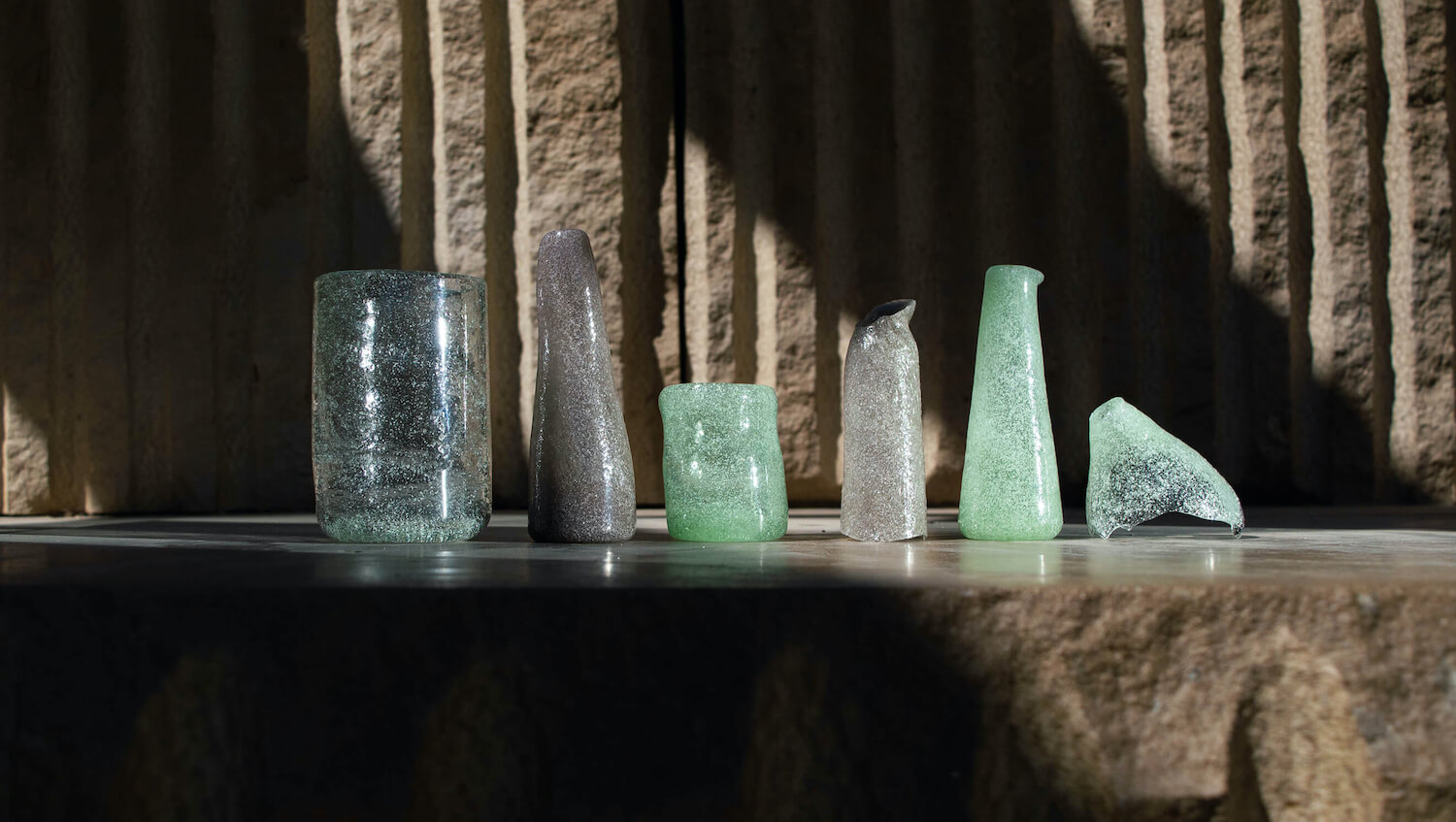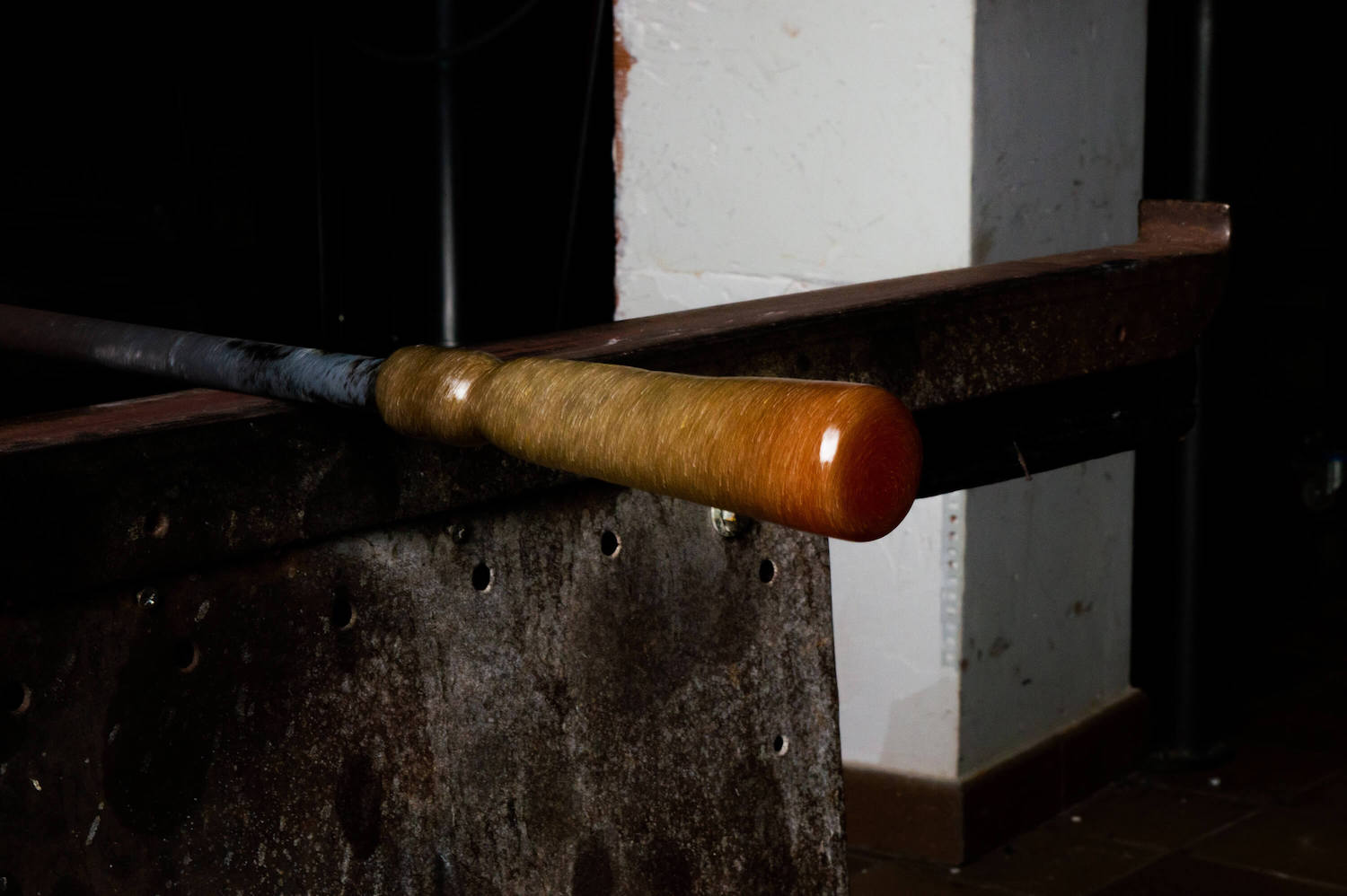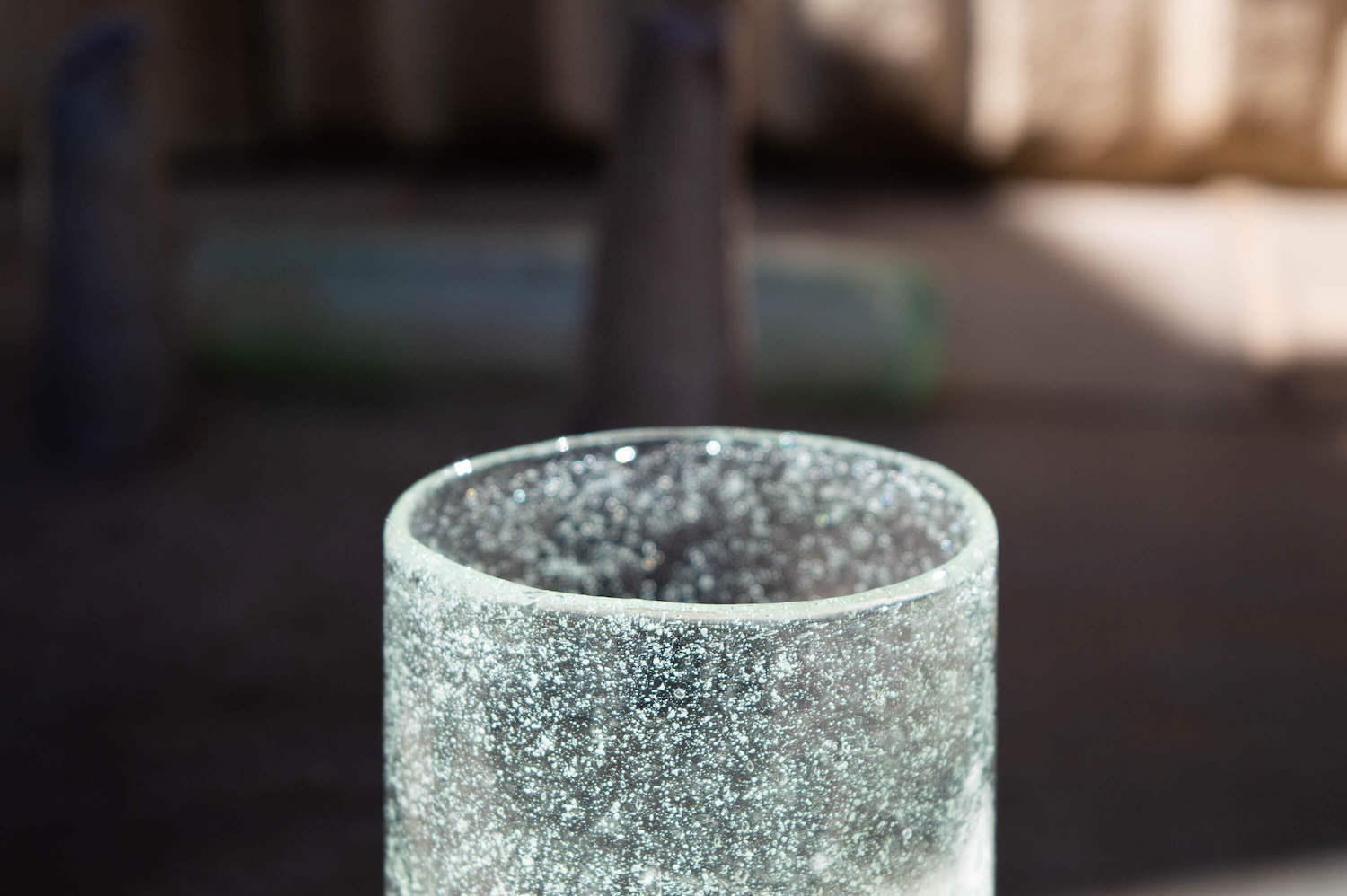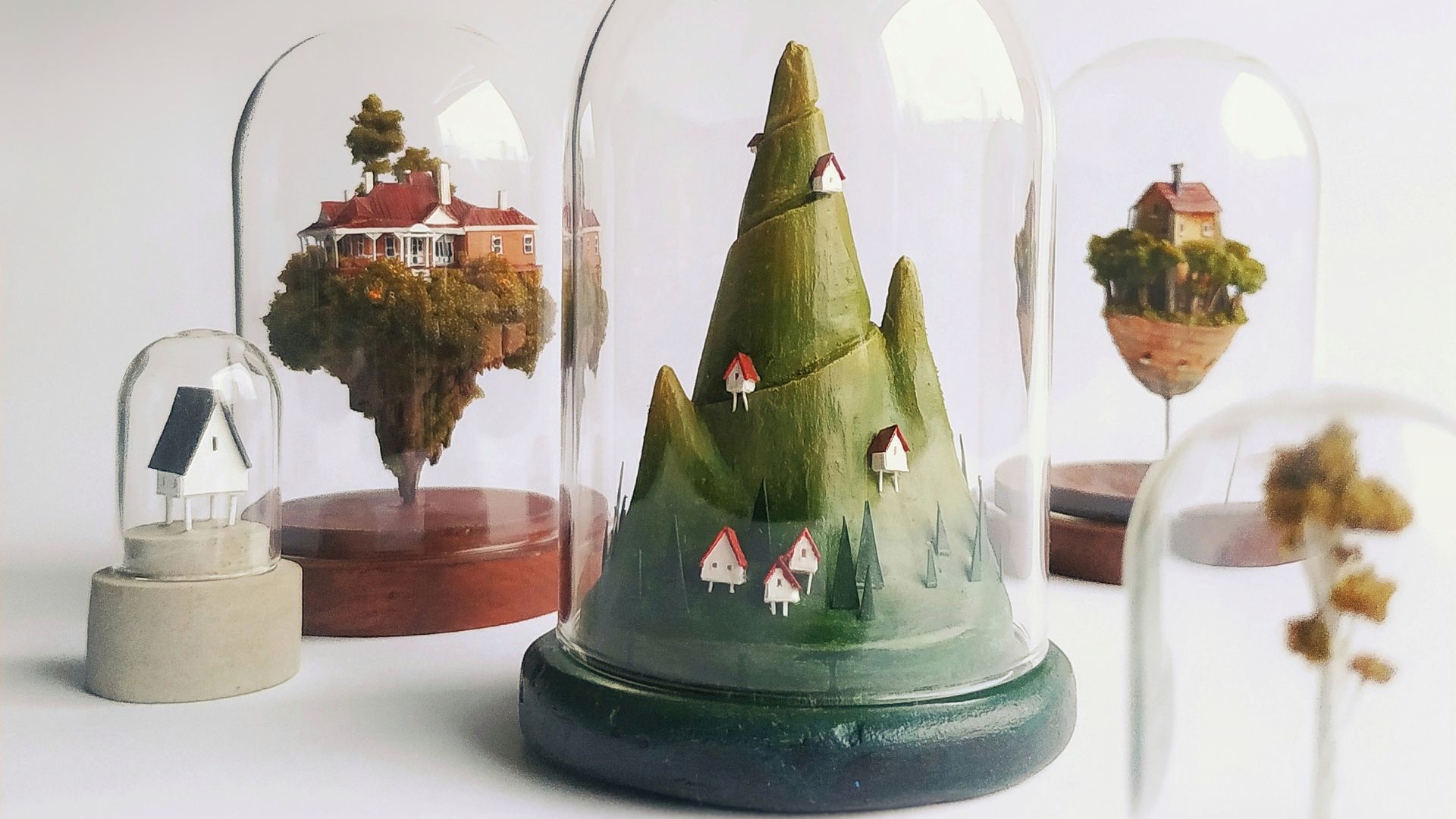Studio Peipei’s vases use sustainable glass made from seashells

German designer Benedikt Peirotén proposes using waste streams to replace the energy-intensive ingredients in glass.
When you factor in energy use during the production of glass and the impact mining for its ingredients has on the planet, the case for glass gets weaker and weaker, prompting designers to explore new and more sustainable ways to produce it.
Called ‘From the Ashes’, the project explores the potential of renewable raw materials as an alternative to soda (sodium carbonate) and (limestone) calcium carbonate, the two main components of glass. “The availability of these ingredients is changing dramatically due to climate change and human production methods,” explains the studio’s founder Benedikt Peirotén.
He proposes waste streams as possible solutions, including wood ash collected from pizzerias and shells from seafood restaurants, which are typically thrown away. “Potassium Carbonate can be extracted from wood ash with little effort,” says Peirotén.
Like Sodium Carbonate in the traditional production of glass, Potassium Carbonate acts as a flux, lowering the high melting point of the main glass forming constituents, usually silica and alumina, which is used to prevent crystallisation. When experimenting with the material, Peirotén also discovered that it creates intense color tones that give the glass a unique character.
Meanwhile, ground seashells are used to give the glass its usual hardness, taking the place of calcium carbonate, which is usually mined from limestone using energy intensive processes. In the end, only the sand remains, which has to be bought in.
Once melted, the glass is in an endless recycling cycle with no by-products or waste. “It can be used again and again, or it can be ground to sand again,” says Peirotén. “So it can be given back into nature if the ingredients are harmless.”
Taiwanese HSIANG HAN DESIGN created multilayered installations with recycled glass transformed into natural forms: explore the Glass in Nature exhibition.
Glass is harmful to the environment
The discussions around glass and its impact on the planet are intensifying. Last month we published a project by Snohetta and Studio Plastique, which highlighted the scarcity of sand, which is one of the key components in the production of glass.
Studio Peipei might not tackle that ingredient but it does propose solutions to its other, energy-intensive components. Peirotén has taken underexplored waste streams and found a clever solution with wide-ranging applications in these glass vases. Here, it is demonstrated with vases but the possibilities extend beyond that.
About recycling glass with style… Object Density repurposes imperfect lenses to create lighting that celebrates their unique distortive qualities.













